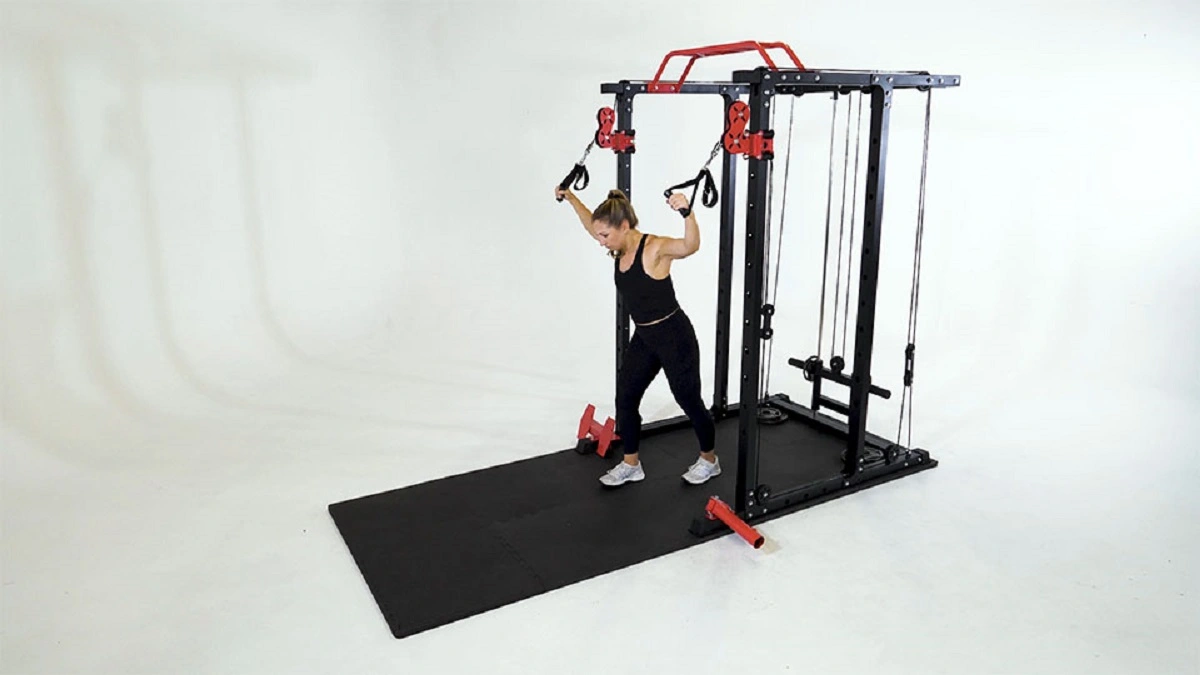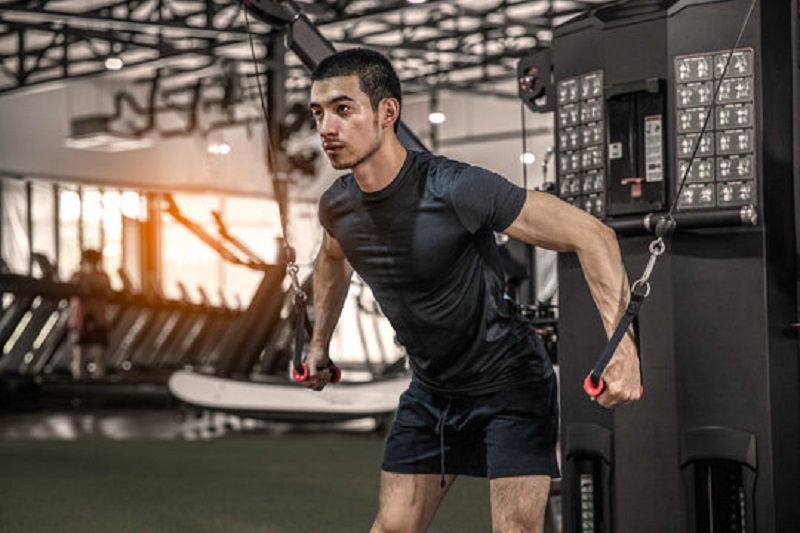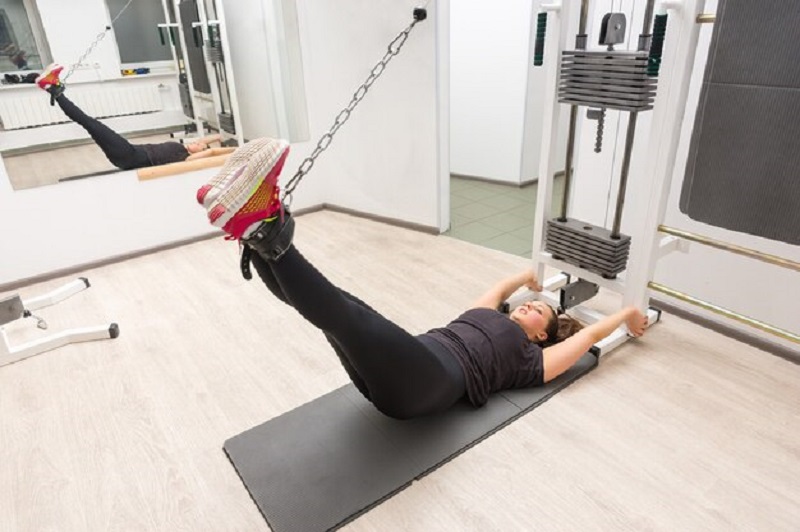
Cable Crossover Machines
Cable Crossover Machines- 10 Common Mistakes
Table of Contents
Cable crossover machines are an indispensable tool in many gyms, offering a versatile and effective way to target various muscle groups, primarily the chest, shoulders, and arms. Despite their popularity, many individuals often make critical mistakes when using cable crossover machines, which can hinder their progress, lead to injuries, and waste time during workouts. In this article, we will discuss the 10 most common mistakes people make when using cable crossover machines and provide tips on how to avoid them to get the best results.
1. Improper Setup and Adjustments
Improper setup is probably one of the most common mistakes when using the Cable Crossover Machines. Many people don’t adjust the machine correctly or fail to consider their body type, leading to ineffective exercises and potential injury.
Why This Is a Mistake:
The Cable Crossover Machines have adjustable pulleys that can be set to different heights and angles. Setting these pulleys incorrectly means you’re not targeting the right part of the muscle, which results in suboptimal muscle engagement. For example, the chest exercises, like cable chest flies, require the pulleys to be at shoulder height or slightly above, depending on the desired angle.
How to Fix It:
Adjust the pulleys to the right height based on the exercise you’re performing. If you’re targeting the upper chest, set the pulleys higher. For the middle chest, set them at chest level, and for the lower chest, lower the pulleys. Make sure the handles are at an appropriate distance to allow full range of motion without straining.
2. Using Too Much Weight
Many gym-goers load up the cable crossover machine with more weight than they can handle. This often causes poor form and reduces the effectiveness of the exercise.
Why This Is a Mistake:
Mercedes Benz of Miami, Using too much weight results in a compromised range of motion, especially when doing cable chest flyes or any other movement. This could also cause injury, especially since the joints are placed in unnatural positions.
How to Fix It:
Begin with a relatively light weight that you can control and execute the exercise in a proper form. Gradually increase the weight with progressive improvement in strength but don’t compromise on form just to lift heavier.
3. Jerking or Using Momentum
Most people use momentum or jerk the weight while doing it on the cable crossover machine.
Why This Is A Mistake:
Momentum-based movements reduce the time under tension for the muscles, minimizing muscle growth. In addition, jerking the weight can put too much stress on your joints and increase the chances of injury, especially to the shoulders and elbows.
How to Fix It:
Do the exercises slowly and control the motion rather than to rush through the movements. Make sure you are working the full range of motion, squeezing the muscle at the top of every rep, and resisting the weight through both the concentric (lifting) and eccentric (lowering) phases.
4. Cable Crossover Machines Failure to Warm Up

Failure to warm up before utilizing the cable crossover machine can lead to less than stellar performance and potentially injury.
Why This Is a Mistake:
Your muscles, joints, and connective tissues require some warm-up time before performing rigorous activity. Missing this preparation may result in stiffened muscles, thus being vulnerable to strains or injuries.
How to Fix It:
Always warm-up with dynamic stretches or light cardio to get the blood moving to your muscles. The lighter sets on the cable machine are also great, as this will gradually take you into higher intensity and prepare your body for more intense work.
5. Cable Crossover Machines Bad Posture
Cable Crossover Success, Proper posture is quite important while using the cable crossover machine. Poor posture leads to lesser effectiveness of exercises and could cause muscle imbalances and injuries.
Why This Is a Mistake:
Slouching or arching the back while performing cable exercises fails to engage the chest muscles appropriately. Moreover, it causes unnecessary strain on the lower back and shoulders.
How to Fix It:
Stand with your feet hip-width apart, and maintain a slight bend in the knees to avoid locking them. Keep your back neutral, not arched or rounded, during the exercise. Use your core to support your spine, and avoid leaning forward or backward during exercises.
6. Cable Crossover Machines Overcontracting
One of the most common mistakes during cable crossover exercises is overextending or overcontracting the arms, which may compromise the form and safety of the exercise.
Why This Is a Mistake:
This is because overextending the arms may put undue stress on the shoulder joints, while overcontracting can lead to shoulder impingement or muscle overuse.
Ensure that your arms are slightly bent throughout the movement range. Do not hyperextend or lock your elbows. Control the movement without over-stretching the arms, and do not squeeze the chest too hard at the peak of the exercise.
7. Using the Wrong Hand Position
The position of your hands during cable exercises is critical for targeting the right muscle groups. Many people mistakenly use improper hand grips, which affects the results of their workout.
Why This Is a Mistake:
Incorrect hand positioning can shift the focus away from the target muscle, thus making exercises inefficient. For instance, using a neutral grip instead of a pronated grip during cable chest flys can change how the chest muscles are activated.
How to Fix It:
For chest exercises, a neutral or slightly pronated grip (palms facing each other or slightly down) will be the most effective for hitting the chest muscles correctly. For shoulders or back exercises, the grip should be adjusted as needed to achieve optimal activation.
8. Cable Crossover Machines Chest-Only Training
The other error made with the cable crossover machine is that people train exclusively on chest exercises and neglect the rest of the body.

Why This Is Wrong:
Although the cable crossover is very effective in working the chest, it can also work for shoulder exercises, exercise for the back, as well as leg exercises. Training of just one muscle group means an imbalanced physique may occur and limits overall development of strength.
How to Improve It:
Add diversity to your workout routine through your cable machine by including chest flys, lat pulldowns, cable rows, shoulder raises, and tricep extensions.
9. Failure to Alter the Cable Crossover Machines Pulleys for Varied Angles
Most individuals do not adjust the cable machine’s pulleys for various angles on different exercises like upper chest or lower chest flys.
Why It’s Wrong:
Not adjusting the height properly means you might not fully target the desired area of the chest, such as the upper or lower chest, leading to unbalanced muscle development.
How to Fix It:
Experiment with adjusting the height of the pulleys for different exercises. For example, for lower chest exercises, pull the cables down, and for upper chest exercises, set them higher. This ensures that each area of the chest gets adequate stimulation.
10. Cable Crossover Machines Not Engaging the Core
Most users fail to activate the core while working out using the cable crossover machine. The core is very necessary in maintaining stability and ensuring control of the movement.
Why This Is a Mistake:
Not engaging the core lowers the movement stability and raises the potential for injury in the lower back and shoulders. Also, not activating the core results in a lack of achieving the maximum potential of the exercise.
How to Fix It:
Keep your core tight throughout each exercise, as this will help stabilize your body and improve your control over the movement. It will also prevent lower back pain and improve your posture in general during exercises.
Conclusion: Cable Crossover Machines
The cable crossover machine is one of the most versatile pieces of equipment in the gym, capable of targeting various muscle groups when used correctly. However, avoiding common mistakes such as improper setup, overloading the machine with weight, and neglecting posture can make a huge difference in the effectiveness and safety of your workout. Understanding and correcting these common mistakes will improve the quality of your workouts, reduce the risk of injury, and yield better results.
So the next time you step up to the cable crossover machine, remember these tips, and don’t rush through the movements. Focus on form, control, and consistency to get the most out of every set and make real progress toward your fitness goals.
FAQs?
When Is the Best Time to Buy a Cable Crossover Machine?
The best time to buy a cable crossover machine is typically during major sales events, such as Black Friday, New Year sales, or end-of-year clearance periods, when fitness equipment is often discounted. Additionally, shopping during the off-season (spring and summer) may yield better prices as demand tends to be lower.
Why Should You Invest in Cable Crossover Machines?
Investing in a cable crossover machine is beneficial because it offers versatile, full-body strength training with adjustable resistance, allowing for a variety of exercises targeting different muscle groups. It’s effective for improving muscle tone, enhancing functional strength, and offering a low-impact alternative to free weights, making it suitable for all fitness levels.
What Are the Benefits of Using Cable Crossover Machines?
The benefits of using cable crossover machines include increased muscle engagement, versatility for targeting multiple muscle groups, improved functional strength, and a full range of motion. They allow for adjustable resistance, enhancing muscle tone and offering a low-impact workout that suits various fitness levels.


